Violet "Grinya": description and cultivation of the variety
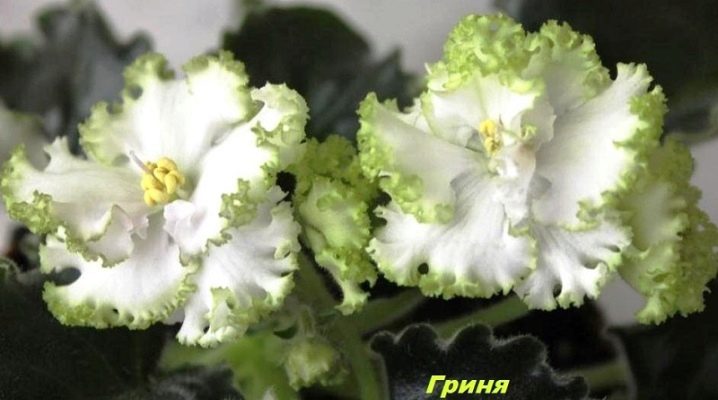
Violet "Green" does not have a bright color, but it pleases with velvety flowers, dark foliage and abundant flowering. All this can only be achieved with proper care.
It should be noted right away that this plant has nothing to do with conventional violets. But since this name is more familiar, in the article this flower is called that way.
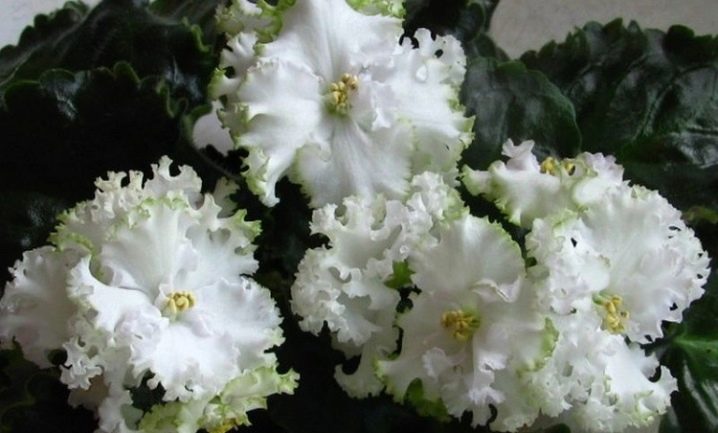
Description
The flower appeared thanks to the breeder T. Dadoyan. Semi-double, white flowers with green ruffles are not very large, but they can densely cover the foliage. During active flowering, they seem to cover the pot, and the fringe along the edge creates a solemn look. The green border disappears over time.
The flowering process lasts a long time, while the old flowers do not deteriorate. The only drawback is that this variety grows for a long time, and the buds do not bloom immediately.
Unlike flowers, the leaves are large and have a bright green tint. Like buds, they have a wavy structure around the edges. The rosette turns out to be neat, and the leaves lie flat.

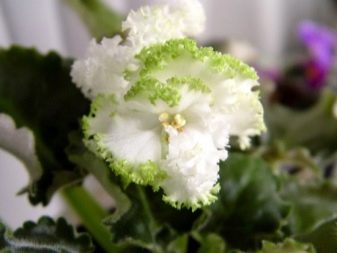
Conditions
Usambara violets love bright, filtered sunlight from spring to fall. In winter, they fall into a dormant state if they are not provided with artificial lighting. The east side or north window is perfect for these indoor flowers.
Natural light is the most important factor for continued flowering. The pot is placed on a windowsill, where the sun's scattered rays fall in sufficient quantities. The east window is the best option because the violet meets the morning sun there. A thin curtain will be needed when placing plants on the south or west side. In order for the bush to develop symmetrically, it is necessary to rotate it regularly every week.
In the absence of sufficient natural light, the plant can be grown under fluorescent lamps. For this, installations with a wide range are used. The lamp should stand above the bush at a distance of 7 cm.
The total amount of light should reach a maximum of 16 hours per day, but not less than 12.
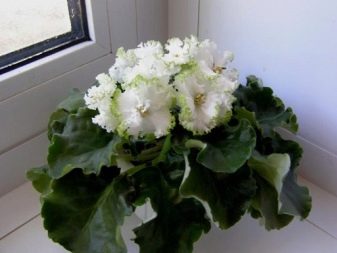
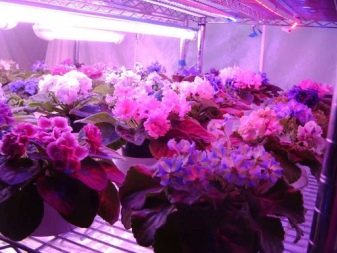
The room temperature should not drop below 15 degrees. Saintpaulias can be kept dormant during the winter. To do this, they are placed in a room with a lower temperature for several weeks.
These flowers prefer high levels of humidity, but do not like water being sprayed on foliage. Instead, it is best to place the pot on a saucer that should be filled with pebbles and water. This is an important requirement if the bush is kept on the windowsill above the battery.
You should also remove withered peduncles and leaves at the base in time. This is necessary not only for an attractive appearance, but also for the prevention of fungal infections.

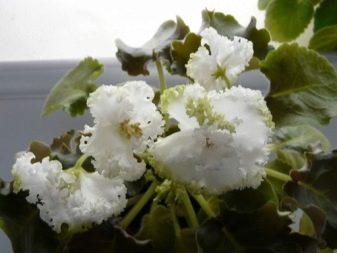
Watering and feeding
The preferred way to water violets is to place them in a saucer, which should be filled with water first. It is best to use soft water. You can also take the rain version, standing from the tap, melted snow, or even well water, but it must be warm.
The plant must be allowed to absorb moisture, but do not keep the pot in water all the time, as this will cause root rot and the violet will die.
You can water from above, from below, use wicks or sprinkler systems. However, about once a month, the soil should be moistened from above to wash away the accumulated salts after fertilization - especially for clay pots.
If water gets on the leaves, wipe it off with a dry paper towel to prevent blotchiness on the foliage.
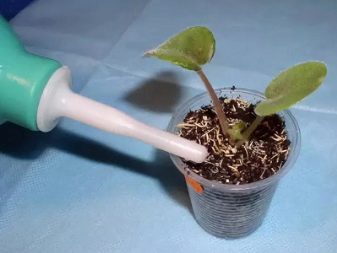
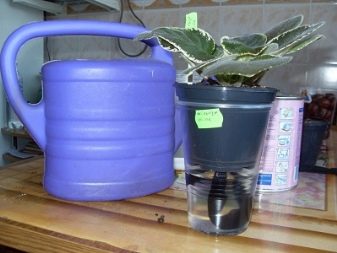
If watering is done from above, then always check that moisture does not get into the outlets. The soil must be dry before re-watering. The biggest mistake novice growers make is keeping the soil too wet for a long time. The pot must have a good drainage system.
It is worth feeding violets every two weeks with a weak liquid fertilizer. If too much foliage appears, then you need to reduce the amount of nitrogen. Each time top dressing is applied along with watering, the solution should be four times weaker than the proportion indicated on the package.
Lack of fertilization is one of the reasons why the violet will not bloom. It is better to use formulations with a low urea content, since the roots burn strongly from it.
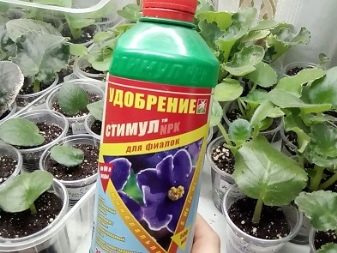
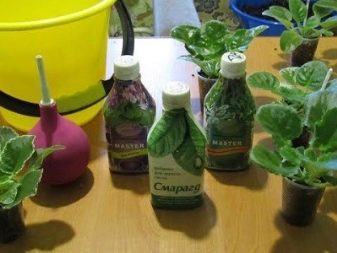
Reproduction
One of the main advantages of such a plant is easy reproduction. It is best to use the leaves from the third row in the outlet as planting material, since they are the strongest.
As a nutrient medium, some growers take water with the addition of a small amount of a growth activator, but this does not always lead to the desired result, since the root system is weak. It is better to take pure vermiculite for this purpose, because it retains moisture, but does not allow the roots to rot.
Vermiculite is placed in a pot, a leaf with a stem is inserted into it, after which it is necessary to pour water and cover with foil. You need to keep the cutting in the sun, but away from direct rays. The temperature should be around 20-25 degrees.
After 4-6 weeks, small leaves can be seen starting to emerge from the base of the stem. After they are planted in the ground, when the plant takes root, you need to add a little fertilizer. After about six months, the plant will bloom.

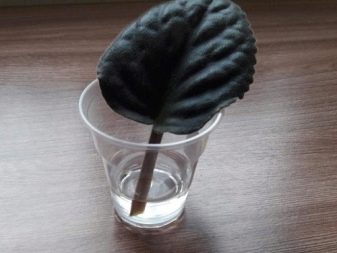
Transfer
When transplanting, the new soil must be sterilized. A new container is chosen more by a few centimeters in diameter, but it does not need to be taken wider, since then all efforts will be devoted to the development of roots, and not flowers.
The ideal planting soil contains equal amounts of sphagnum peat, vermiculite and perlite. Repotting a violet is allowed every 2 years or at a time when it seems that the bush has outgrown its container. The best time for the procedure is spring.
It is desirable that the container is made of plastic or clay, but in the second case, the soil is heavily salted and requires regular processing or replacement.
During transplantation, the flower is carefully removed from the old compost and transferred to the new one. The roots should be pruned, treated with a solution of activated carbon.
After planting, the earth is not compacted, but it is better to immediately make high-quality watering and wait until the excess moisture drains.

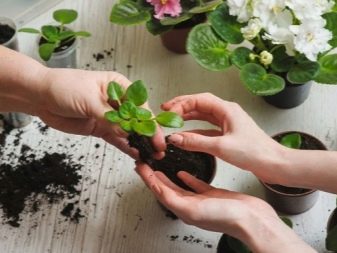
Pests and diseases
There are several common problems with all plant species, which will be discussed below.
- Lack of flowering. It is worth checking the amount of fertilizer applied, whether there is enough sunlight. A too low temperature can also cause a problem.
- The appearance of rot. It is impossible for water to get on the leaves and stems, even inside the outlets. In this case, it is required to reduce the amount of moisture and treat the plant with a fungicide. If it is root rot, then the soil and the pot are changed, the affected roots are removed, and then treated with a solution of activated carbon.
- Powdery mildew. It is imperative to remove the diseased parts, check the air circulation and the humidity level.
- The appearance of insects. Using a cotton swab, moisten it with alcohol and wipe the flower.
- Bacterial contamination. These diseases are not cured, the plant needs to be disposed of.
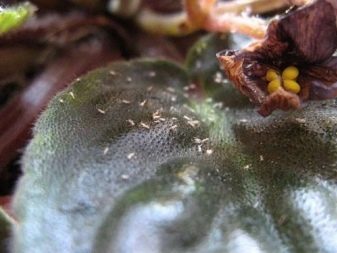
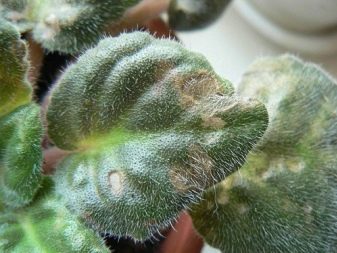
You can watch a video review of the "Grinya" violet variety a little below.































The comment was sent successfully.